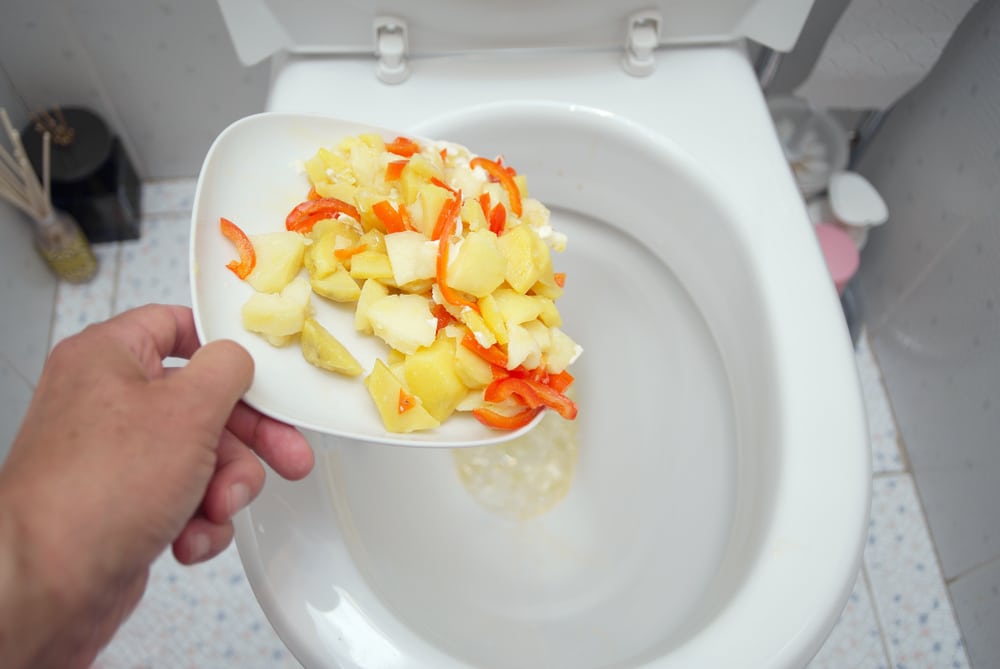Is it Safe to Flush Food in the Toilet?
Is it Safe to Flush Food in the Toilet?
Blog Article
Right here further down you can locate a bunch of exceptional advice related to Flushing Food Down the Toilet?.

Intro
Lots of people are typically confronted with the predicament of what to do with food waste, specifically when it concerns leftovers or scraps. One usual question that emerges is whether it's alright to flush food down the toilet. In this write-up, we'll look into the reasons why people could take into consideration purging food, the repercussions of doing so, and different methods for correct disposal.
Reasons why individuals could think about purging food
Absence of understanding
Some people may not know the prospective injury triggered by purging food down the toilet. They might incorrectly think that it's a safe practice.
Benefit
Flushing food down the bathroom might appear like a fast and very easy option to taking care of undesirable scraps, particularly when there's no close-by garbage can available.
Laziness
In some cases, individuals might merely choose to flush food out of sheer idleness, without taking into consideration the repercussions of their actions.
Repercussions of flushing food down the commode
Ecological impact
Food waste that ends up in waterways can add to contamination and damage aquatic ecosystems. Furthermore, the water made use of to flush food can stress water sources.
Pipes problems
Purging food can result in clogged pipes and drains pipes, triggering expensive plumbing repair services and aggravations.
Types of food that must not be purged
Coarse foods
Foods with coarse textures such as celery or corn husks can get tangled in pipes and trigger clogs.
Starchy foods
Starchy foods like pasta and rice can absorb water and swell, resulting in obstructions in pipes.
Oils and fats
Greasy foods like bacon or food preparation oils need to never be purged down the commode as they can solidify and cause obstructions.
Proper disposal techniques for food waste
Making use of a garbage disposal
For homes equipped with waste disposal unit, food scraps can be ground up and flushed through the plumbing system. However, not all foods appropriate for disposal in this fashion.
Recycling
Certain food packaging products can be recycled, reducing waste and minimizing environmental effect.
Composting
Composting is an eco-friendly method to deal with food waste. Organic products can be composted and utilized to enrich dirt for horticulture.
The significance of appropriate waste administration
Decreasing ecological damage
Correct waste management methods, such as composting and recycling, help minimize pollution and protect natural resources for future generations.
Safeguarding pipes systems
By preventing the practice of flushing food down the bathroom, home owners can stop expensive plumbing fixings and preserve the honesty of their pipes systems.
Verdict
To conclude, while it might be tempting to purge food down the toilet for comfort, it's important to understand the possible repercussions of this activity. By embracing appropriate waste monitoring practices and getting rid of food waste properly, people can contribute to much healthier plumbing systems and a cleaner atmosphere for all.
FLUSH FOOD DOWN THE TOILET?
FLUSHING FOOD CAN CAUSE BLOCKED DRAINS IN YOUR HOME
All of the plumbing fixtures in your home are connected to the same sewer pipe outside of your home. This outdoor sewer pipe is responsible for transporting all the wastewater from your home to the Council sewer mains. Even small pieces of food that go down the kitchen sink can cause problems for your sewer. It should therefore be obvious that flushing larger bits of food, such as meat, risks a clog in either the toilet itself or the sewer pipes. Flushing greasy food is even more problematic because oil coagulates when it cools, coating the interior lining of your pipes.
THE TOILET IS NOT A BIN
Food isn’t the only thing that people shouldn’t be flushing down the toilet. People use the toilet to dispose of all kinds of things such as tampons, makeup wipes, dental floss, kitty litter and even underwear. Water goes to great lengths to educate residents about the high costs and stress placed on wastewater treatment systems simply from people flushing the wrong stuff down the toilet. It costs taxpayers millions of dollars each year, and homeowners thousands in blocked drain repairs.
FLUSHING FOOD IS A WASTE OF WATER
Flushing food is a waste of our most precious resource - water. In June this year Level 1 water restrictions were introduced to protect water supply from drought conditions. Much of New South Wales continues to be affected by prolonged drought with recent figures revealing up to 97 per cent of the state remains in drought. Depending on whether you have a single or dual flush toilet, every single flush uses between five and 11 litres of water. In the current climate this is a huge amount of water to be wasting on flushing food that should be placed in the bin (or better yet, the compost).
https://www.jabplumbingsolutions.com.au/blog/can-you-flush-food-down-the-toilet

I recently found that page on What Can Happen If You Flush Food Down the Toilet? when doing a lookup on the web. Sharing is caring. Helping others is fun. I praise you for being here. Return soon.
Additional Information Report this page